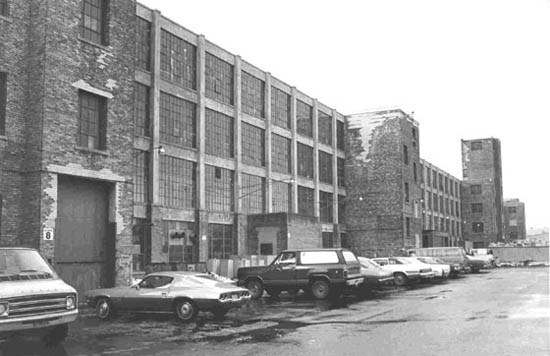
NPS Photo / American Association for State and Local History
Lincoln Motor Company Plant
Detroit, MI
Designated an NHL: June 2, 1978
Designation withdrawn: April 4, 2005
The Lincoln Motor Company Plant was founded in 1917 by Henry M. Leland for the production of Liberty Engines, recognized as "one of America's greatest contributions to aviation during the war." Leland stands as the most successful manufacturer of Liberty engines during World War I by out producing his competition in the quantity of engines manufactured by his company, setting production records for daily and monthly output. Leland later went on to produce the first Lincoln automobiles, named after his personal hero Abraham Lincoln, in the same facilities that had produced the engines so critical to the war effort.
After a fifteen year association with the Cadillac Automobile Company, Leland left the company because of its unwillingness to transition their facilities to serve war production needs. Leland was one of several engineers consulted by the War Department while at Cadillac to study and criticize the design of the Liberty engine as an established toolmaker and machinist in the automotive industry. Upon his resignation from Cadillac, Leland purchased a factory in an industrial section of west Detroit to produce Liberty engines. Quickly realizing that the facilities were not adequate to accommodate his production needs, he undertook a building project to add the four-story Machine Shop and Factory C. Securing the first contract for the production of Liberty engines, Leland eventually produced 6,500 engines at his factory setting industry standards in mass production while maintaining a high level of quality through his insistence on accuracy and precision in production. At the culmination of World War I, the Lincoln Motor Company Plant consisted of the Administration Building and Garage, the Machine Shop, Factories C and D, a power house, a heat treatment plant, a motor testing building, and several other minor structures.

NPS Photo / American Association for State and Local History
After the war, Leland reorganized the company to produce automobiles and introduced the precision-made Lincoln, which included many of the engineering achievements he developed during his tenure at Cadillac as a skilled machinist and producer of fine automobiles. He made no changes to the facilities when he shifted to automobile production at the end of the war. Recognized as the creator of America's first quality cars, Cadillac and Lincoln, Leland holds an important place in automotive history.
Leland retained ownership until 1922 when the company was sold to Henry Ford. Although Ford retained Leland and his son to manage the Lincoln Motor Company, this arrangement only lasted a few months since strong personality conflicts between the Lelands and Ford and his managers, hastened their quick dismissal from the company. The plant became the production home for the Lincoln Zephyr, the Mercury, and the Lincoln Continental. By 1952 production facilities for the Mercury and the Lincoln were moved to Wayne, Michigan, and three years later the factory was sold to Detroit Edison for use as a service center. The Lincoln Motor Company Plant was designated a National Historic Landmark on June 2, 1978.

NPS Photo / Susan Vincent, National Historic Landmarks Program
A majority of the buildings that comprised the Lincoln Motor Company National Historic Landmark, the Administration Building and Garage (Bldg. A), the Machine Shop (Bldg. B), Factory C (Bldg. C), and Factory D (Bldg. D), were demolished between December of 2002 and January of 2003. The original landmark also included Factory G (Building G) in addition to several other support structures. Factory G has lost eighty percent of its original fabric as a result of gutting and removal/replacement of the exterior facade. Almost all of the contributing buildings were leveled and removed compromising the property's historic integrity and association. Because of the loss of these major resources, National Historic Landmark designation for the Lincoln Motor Company Plant was withdrawn on April 4, 2005.
Last updated: August 29, 2018
